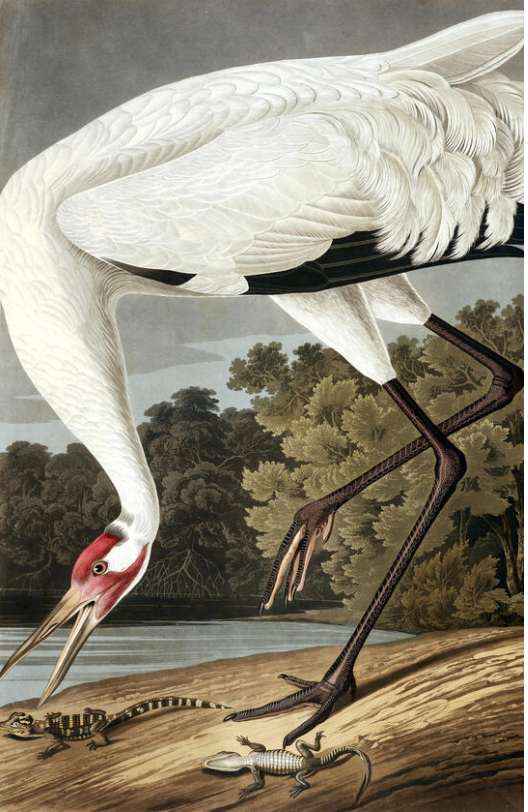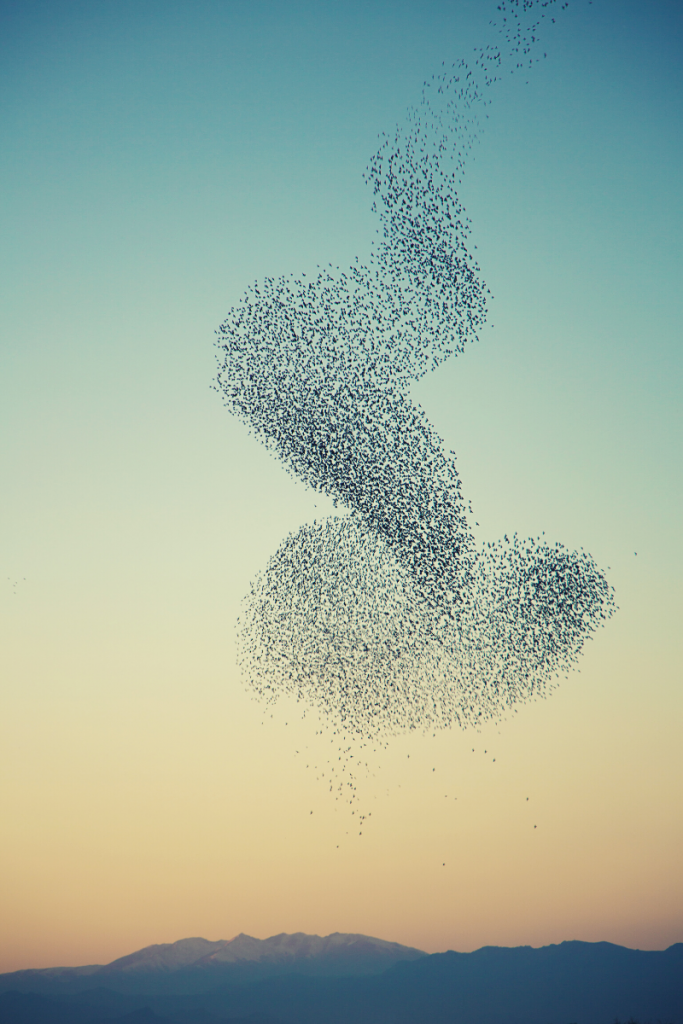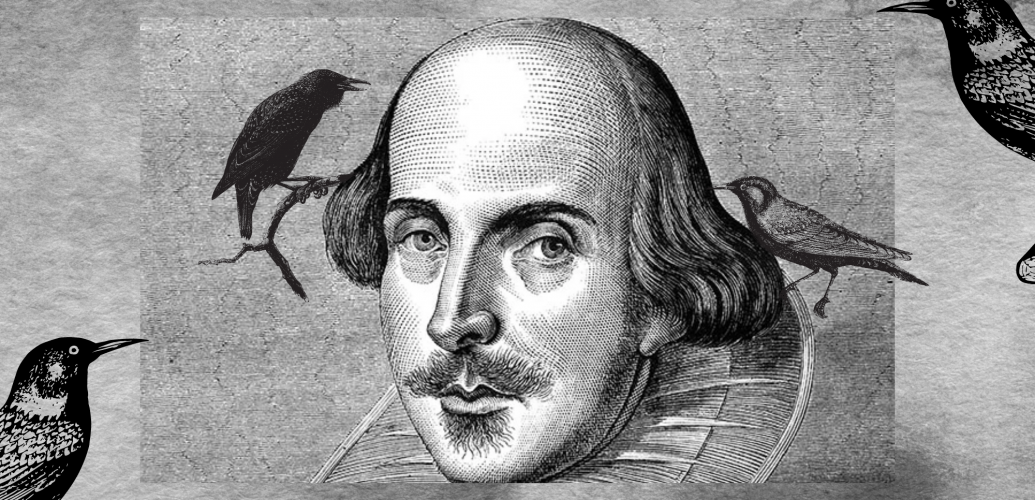Starlings are everywhere.
It’s hard to imagine being in a decent-sized city and not seeing them, and even though they’re concentrated in cities, their range is enormous. What’s striking about the starlings’ spread is how, at each important step, we made it possible.
If there ever were a bombshell bird book, it was John James Audubon’s The Birds of America, published in sections from 1827-1838. Audubon had travelled America, killing birds along the way to use as models for his paintings.

The publication itself was amazing: 435 images, hand-coloured, and life-size. A very large book. Life-size images may not be so impressive for a sparrow, but a whooping crane? No wonder it’s bent over in Audubon’s painting. And the starling, officially the Common Starling, where is it in Audubon’s landmark work? Nowhere. It hadn’t reached North America yet, nor would it likely have been able to do so on its own, But no worries, Eugene Schieffelin was on hand. Mr. Schieffelin was mad about Shakespeare and also belonged to the American Acclimatization Society
The two have really nothing in common unless you view everything, even Shakespeare, through the Acclimatization Society lens. If you did, you might come up with a brilliant idea like, “Let’s bring all the birds in Shakespeare to America!“. The Acclimatization Society wanted to introduce all kinds of European animals and plants to America, and Shakespeare’s birds seemed the perfect opportunity.
How wonderful! How English!
If you’re as much of a Shakespeare aficionado as Eugene Schieffelin, you might already know that the one time that a starling appeared in Shakespeare was in Henry IV, Part I where Hotspur has the great idea of training a bird to repeat the name of the king’s rival over and over to torment the King himself:
‘I’ll have a starling taught to speak nothing but ‘Mortimer’, and give it to him, to keep his anger still in motion.”
William Shakespeare, Henry IV
That one line, maybe a line that Shakespeare just tossed off and never really thought about again, led to 200 million starlings in North America today.
Here’s how it happened: Once in 1890 and again in ’91 Schieffelin oversaw the release of about 100 starlings in Central Park. Within a year they were nesting on the nearby American Museum of Natural History. Today’s estimated 200 million from Canada to Mexico presumably all descend from Schieffelin’s original 100.

This isn’t an unusual story: 5 starlings jumped ship in Venezuela in 1949, then disappeared. Now they’re expanding their range there every year. Australia and New Zealand both brought in starlings in the late nineteenth century, Australia to help pollinate flax and New Zealand to control insect pests. The birds are now plentiful in both.
Internationally starlings cause a wide range of damage to crops, take over nesting sites used by native birds and have made the International Union for Conservation of Nature’s list of the world’s 100 worst invasive species.
And for all this, many of us resent them. We don’t like the fact that they push around some of our favourite birds. We hate that walking under their huge roosts can be an adventure.
But let’s not forget that 1) we brought them here and 2) we continue to make it possible for them to continue to thrive 120 years later. We should aim our resentment at bad decisions made by people more than a century ago, not the bird of their affections. I don’t like it either that they displace native birds, especially woodpeckers, from nesting holes. Same with crop-destroying. But they wouldn’t do either if we hadn’t imported them.
That’s life. There’s no turning back. Too bad for the bird – it’s the only target for our disdain left standing. If you’re in that resentful funk, here’s what you can do: try a change of focus. Appreciate the starling’s fabulous mimicry (Mortimer! Mortimer!), admire its bold iridescence and live for the day you’ll see a murmuration, those perfectly co-ordinated high-speed twists and turns accomplished by hundreds of starlings simultaneously. Seeing that magical sight won’t change history, but it might change you.
You might also like:

